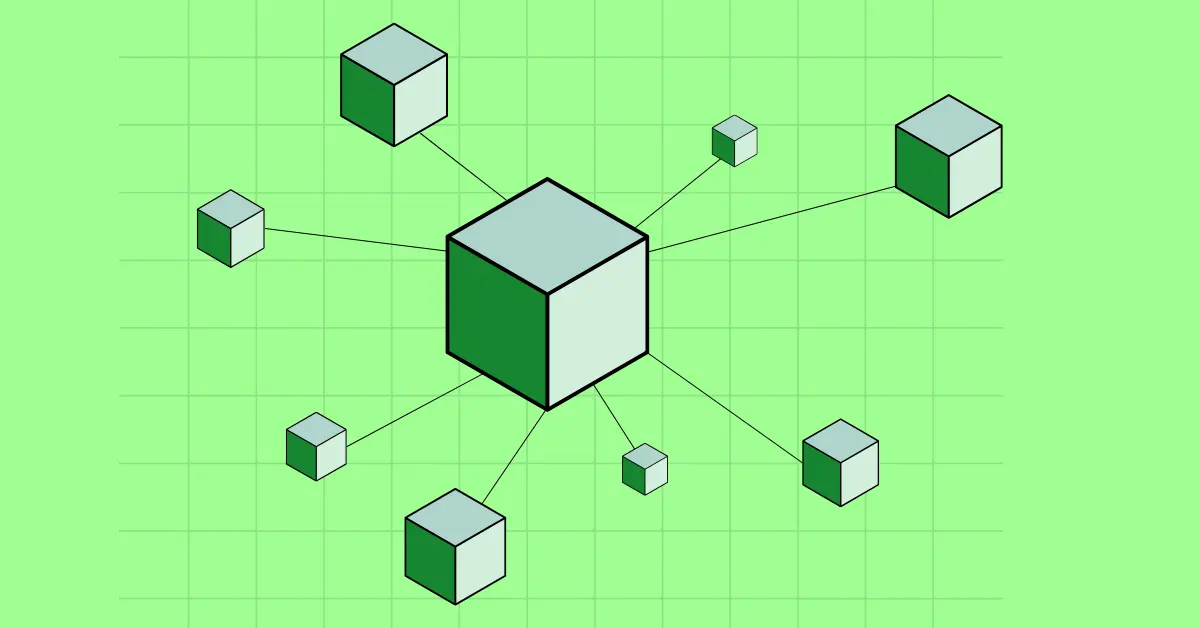
Blockchain technology has brought a great digital revolution that has changed our perspective on transactions, security, decentralization, and transparency. This article focuses on a comprehensive understanding of Blockchain Networks and Nodes. Nodes and Networks are the pillars of the architecture and functionality of blockchains. The developers need to master these concepts for effective blockchain development and keep in mind the vast domain of applications in various industries like finance and supply chain management.
A blockchain network is basically a distributed ledger or record system where multiple devices share and validate information about transactions transparently.
Key components of the Blockchain network are:
Nodes can be referred to as the individual devices or computers that are part of the blockchain network and follow the protocols. Nodes are an inevitable part of Blockchain as they maintain a copy of the public ledger and participate in consensus mechanisms.
Network topology is the arrangement of interconnections between the nodes in the network. Topology outlines and explains how the devices communicate, transmit, propagate the transactions, and reach consensus. Appropriate choice of topology is necessary for the efficiency, scalability, and security of the network.
Pros:
Cons:
Pros:
Cons:
As the name suggests it’s the combination of P2P and Federated topologies.It supports multiple layers and permissions to groups of devices and maintains decentralization. Dragonchain uses Hybrid topology.
Pros:
Cons:
Consensus mechanisms are a set of protocols that should be followed by the nodes in the network to agree on the state of the ledger. These mechanisms are used for the validation and authentication of transactions.
You must be wondering how nodes communicate within the network. The answer is similar to what humans do, Nodes discover other nodes using protocols like Gossip and then propagate the messages. Interesting right?
The synchronization process of nodes involves two steps, firstly initial sync where you download and verify the sync, and the Ongoing sync which just needs to update with new transactions
The performance of the network depends upon the latency, throughput, monitor node performance, and block creation time.
Troubleshooting common issues are connectivity problems and synchronization issues.
Ensuring availability and reliability by implementing redundancy and using load balancing techniques.
A lot of networks face the lower throughput issue while processing a higher number of transactions per second. The traditional consensus mechanisms can be slow and resource-intensive.
Another major challenge faced is storage as the blockchain grows the amount of data also increases which affects the storage capacity and the data retrieval efficiency.
Lightning Network: Bitcoin uses this off-chain fix for quicker cheaper transfers. It sets up payment paths between users. The blockchain logs when paths open or shut.
Plasma and Rollups: Ethereum scales with these tools. They handle trades off-chain and give the main chain a brief recap. This cuts down work for the main blockchain.
Data Partitioning: Sharding splits the blockchain into smaller easier-to-manage bits (shards). Each shard deals with its trades and smart deals. This eases the strain on the whole network.
Parallel Processing: Shards can tackle trades at the same time. This boosts how many trades the network can handle by a lot.
There have been developments in recent times in the consensus mechanisms. There are new additions like Proof of History(PoH) used by Solana. Also, there is an adaption of an ensemble of the different consensuss into one mechanism. There are advancements in the layer 2 solutions like state chains and side chains and integration of interoperability
Bitcoin relies on the PoW mechanism which has issues like Scalability and transaction throughput hence the solution implemented to this problem was Segregated Witness (SegWit) which reduces the transaction size and increases the block capacity. Implementation of the Lightning Network layer two solution increases the transaction speed. These improvements were valuable to the issues faced
Scaling Hurdles: Ethereum’s first PoW system had its speed at 15 TPS much like Bitcoin.
Balance Act: Ethereum struggled to balance the security,quick growth and scalability.
Proof of stake (PoS): Ethereum 2.0 swaps PoW for PoS. This new method saves power and handles more trades.
Split Chains: Ethereum 2.0 brings in split chains. These let it handle many trades at once boosting its power big time.
We can conclude by saying that for an efficient network understanding of the topology and network architecture is essential. Developers along with the coding practices must brush up their knowledge and continuously learn about the updates in this domain. A good hold of these concepts help developers build secure, efficient, and scalable blockchain applications and users can navigate better into the domain of blockchain.
Also Read: Master Solidity Programming Language In 5 Minutes: The Backbone of Ethereum Smart Contracts
CoinPedia has been delivering accurate and timely cryptocurrency and blockchain updates since 2017. All content is created by our expert panel of analysts and journalists, following strict Editorial Guidelines based on E-E-A-T (Experience, Expertise, Authoritativeness, Trustworthiness). Every article is fact-checked against reputable sources to ensure accuracy, transparency, and reliability. Our review policy guarantees unbiased evaluations when recommending exchanges, platforms, or tools. We strive to provide timely updates about everything crypto & blockchain, right from startups to industry majors.
All opinions and insights shared represent the author's own views on current market conditions. Please do your own research before making investment decisions. Neither the writer nor the publication assumes responsibility for your financial choices.
Sponsored content and affiliate links may appear on our site. Advertisements are marked clearly, and our editorial content remains entirely independent from our ad partners.
XRP, the fifth-largest cryptocurrency, is under pressure after falling nearly 5% today and over 10%…
A proposed rule change by MSCI is quickly becoming a major talking point across traditional…
The US Consumer Price Index (CPI) for November is set to be released at 8:30…
Bitcoin price has been moving sideways around $86K, keeping the crypto market nervous. However, bullish…
Coinbase revealed major expansions at its December 17 System Update event in San Francisco, launching…
Cryptocurrency markets are facing heightened volatility as the Bank of Japan (BOJ) prepares to raise…